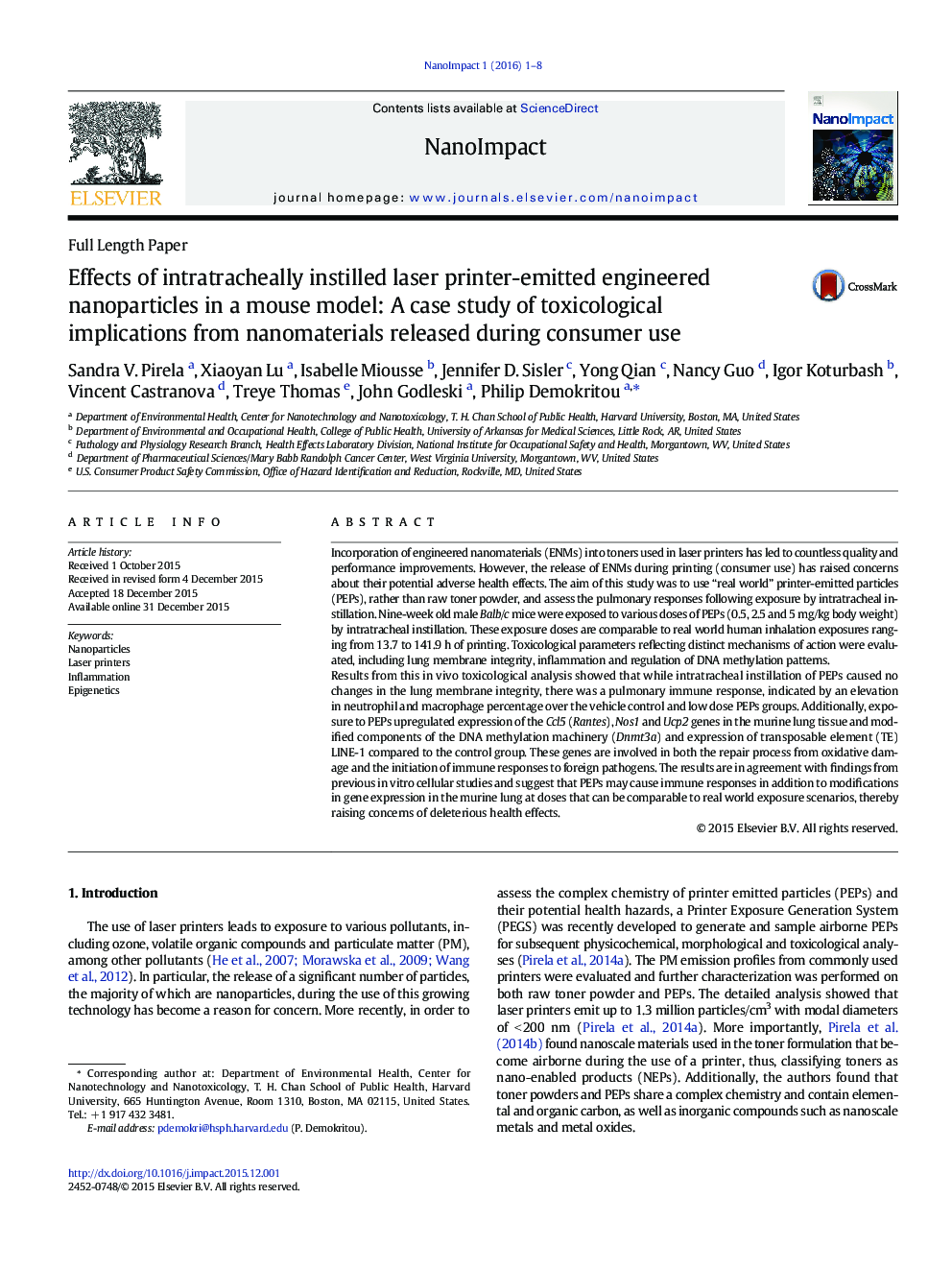| کد مقاله | کد نشریه | سال انتشار | مقاله انگلیسی | نسخه تمام متن |
|---|---|---|---|---|
| 2589387 | 1562025 | 2016 | 8 صفحه PDF | دانلود رایگان |
Rodent exposure to PEPs (PM0.1) by intratracheal instillation led to the following observations:
• Unchanged lung membrane integrity
• Increased white blood cell population from the bronchoalveolar lavage fluid
• Regulated expression of genes involved in the repair processes from oxidative damage as well as the start of immune responses to foreign pathogens
• Modifications in expression of elements of the DNA methylation machinery
Incorporation of engineered nanomaterials (ENMs) into toners used in laser printers has led to countless quality and performance improvements. However, the release of ENMs during printing (consumer use) has raised concerns about their potential adverse health effects. The aim of this study was to use “real world” printer-emitted particles (PEPs), rather than raw toner powder, and assess the pulmonary responses following exposure by intratracheal instillation. Nine-week old male Balb/c mice were exposed to various doses of PEPs (0.5, 2.5 and 5 mg/kg body weight) by intratracheal instillation. These exposure doses are comparable to real world human inhalation exposures ranging from 13.7 to 141.9 h of printing. Toxicological parameters reflecting distinct mechanisms of action were evaluated, including lung membrane integrity, inflammation and regulation of DNA methylation patterns.Results from this in vivo toxicological analysis showed that while intratracheal instillation of PEPs caused no changes in the lung membrane integrity, there was a pulmonary immune response, indicated by an elevation in neutrophil and macrophage percentage over the vehicle control and low dose PEPs groups. Additionally, exposure to PEPs upregulated expression of the Ccl5 (Rantes), Nos1 and Ucp2 genes in the murine lung tissue and modified components of the DNA methylation machinery (Dnmt3a) and expression of transposable element (TE) LINE-1 compared to the control group. These genes are involved in both the repair process from oxidative damage and the initiation of immune responses to foreign pathogens. The results are in agreement with findings from previous in vitro cellular studies and suggest that PEPs may cause immune responses in addition to modifications in gene expression in the murine lung at doses that can be comparable to real world exposure scenarios, thereby raising concerns of deleterious health effects.
Figure optionsDownload as PowerPoint slide
Journal: NanoImpact - Volume 1, January 2016, Pages 1–8
